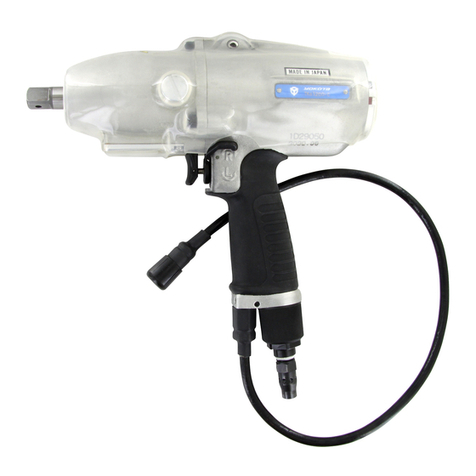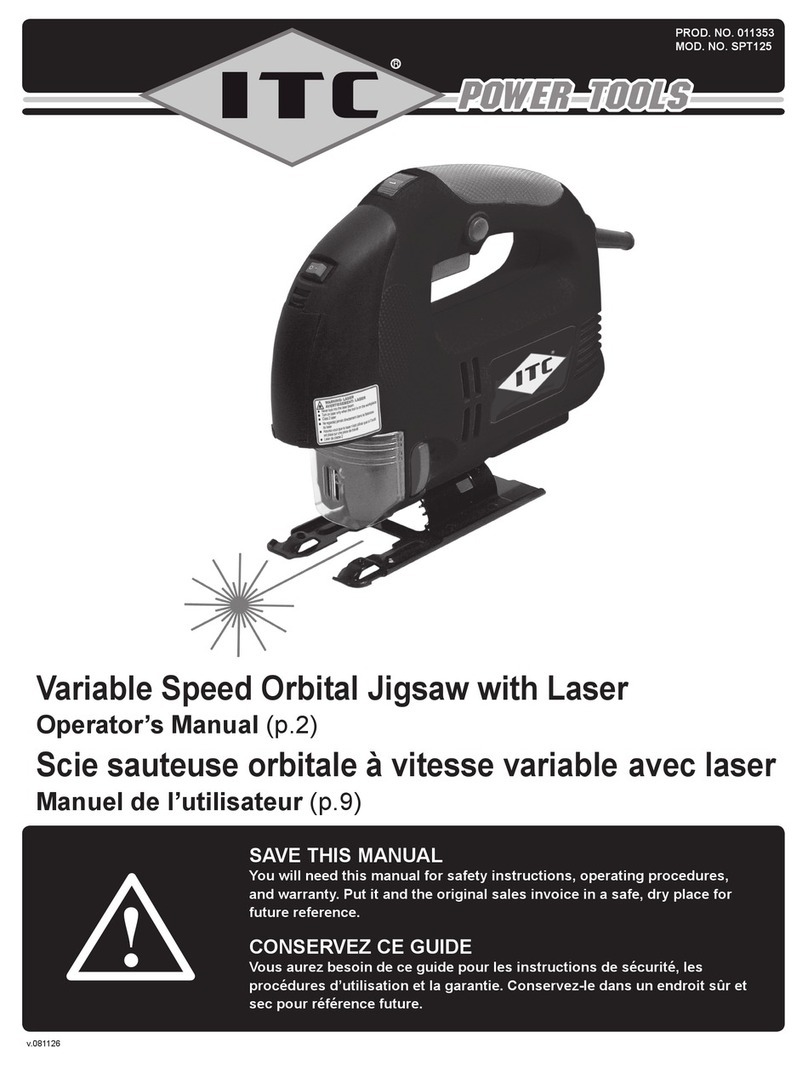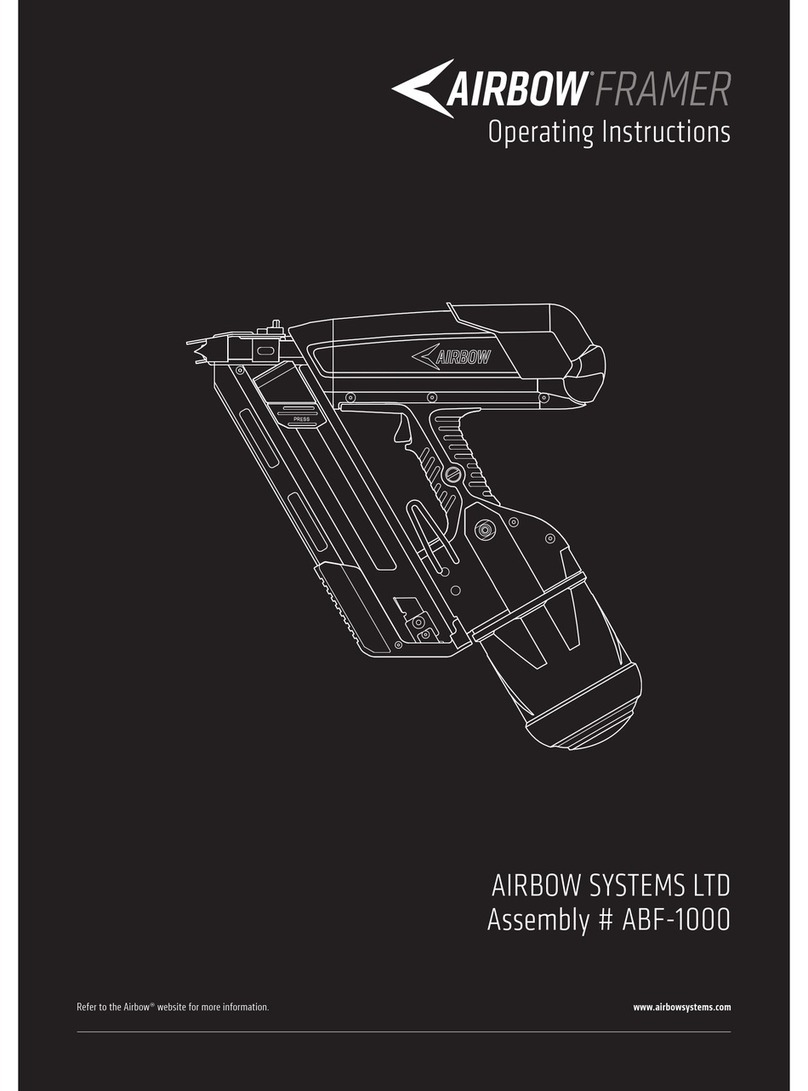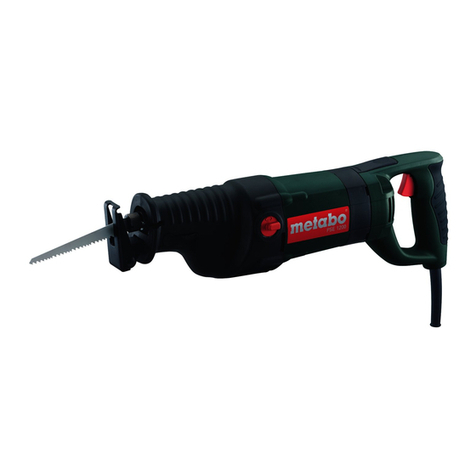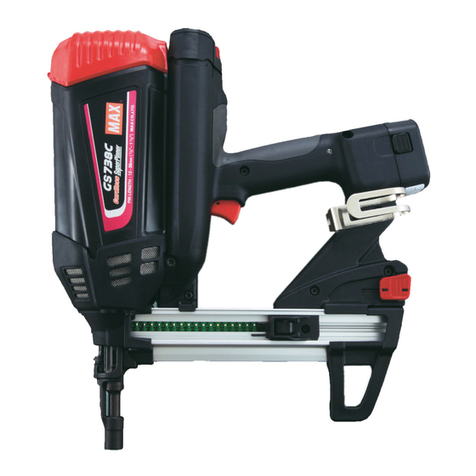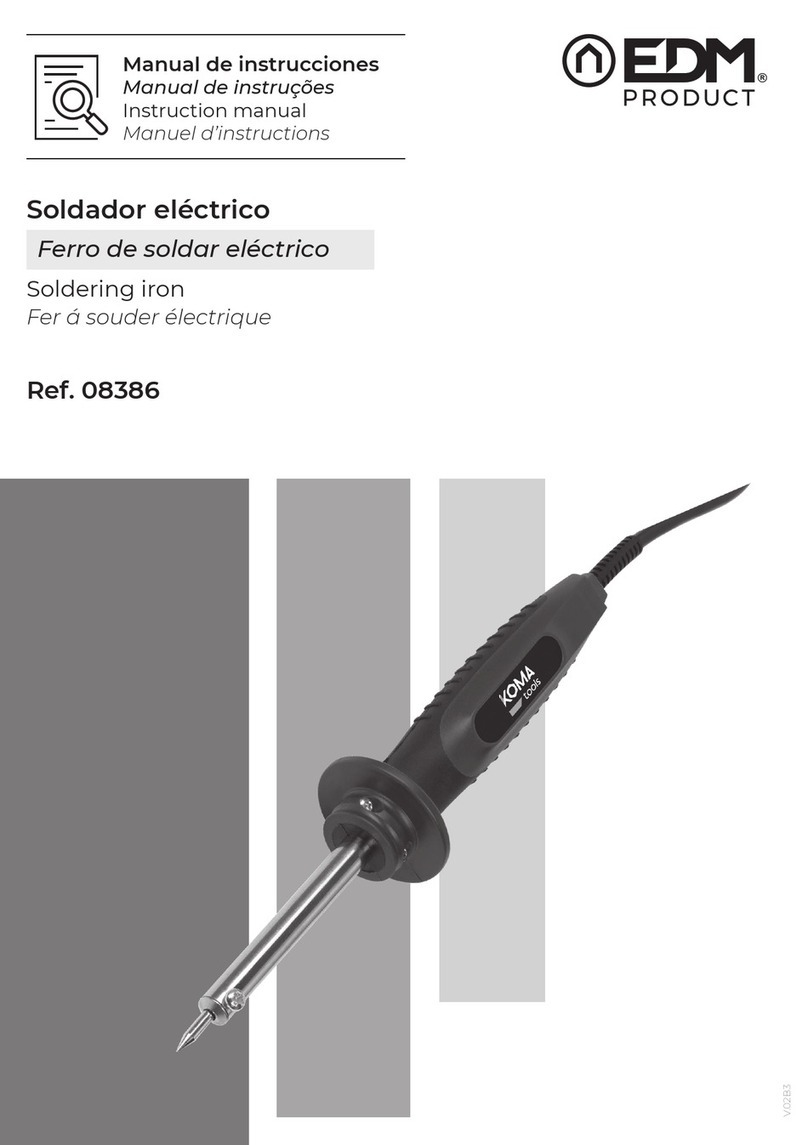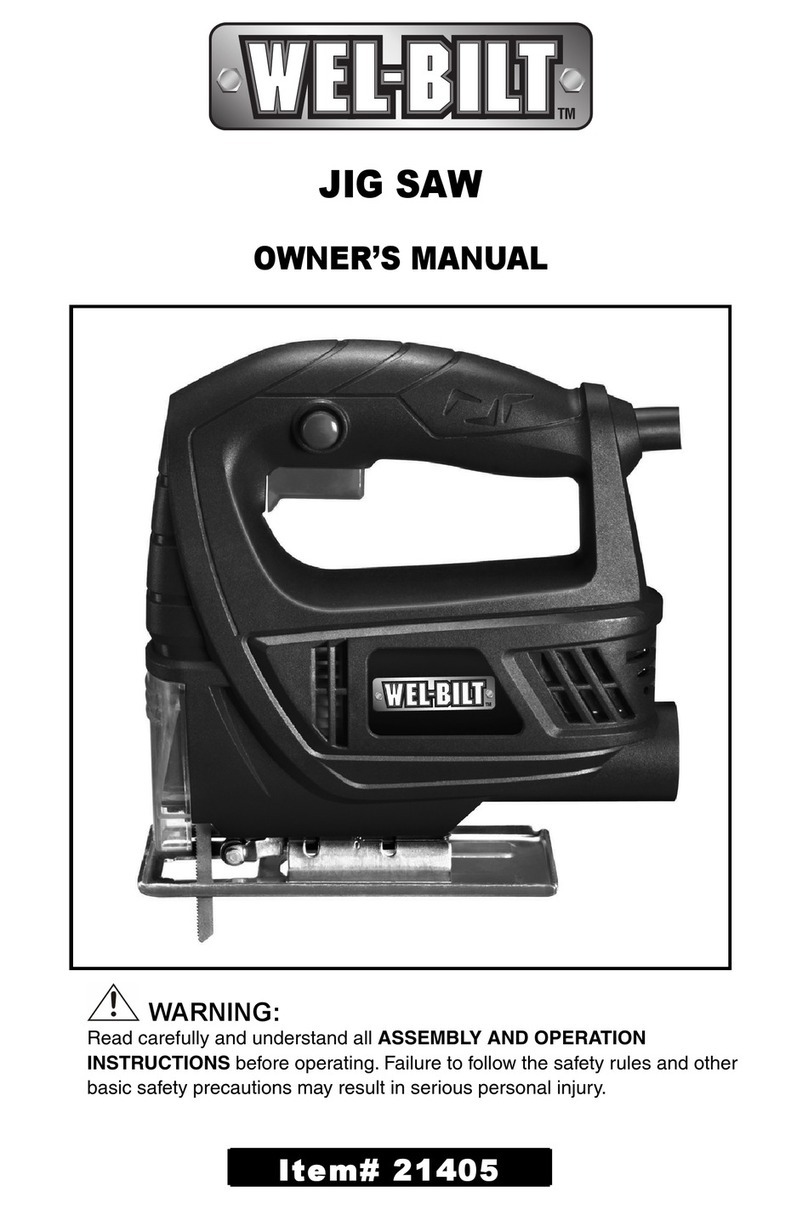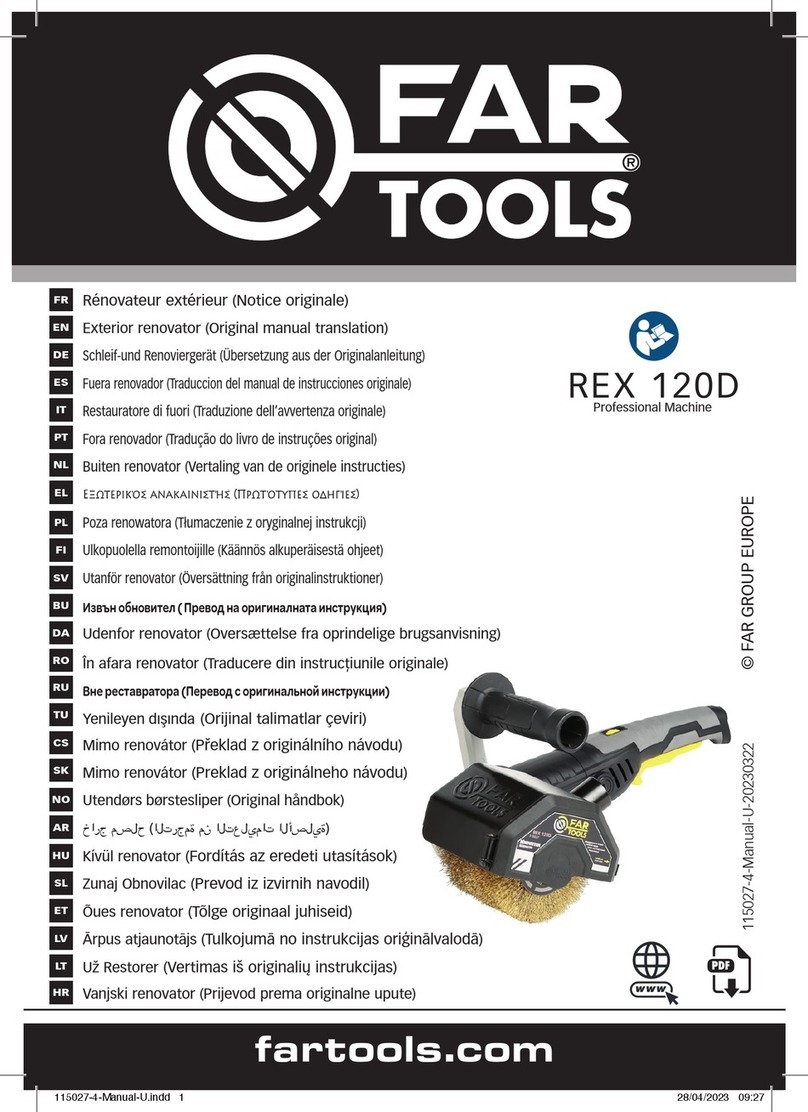Shop Tuff STF-40FCB User manual

Ver tical Sandblast Cabinet
OWNER’S MANUAL
WARNING:
Read carefully and understand all ASSEMBLY AND OPERATION INSTRUCTIONS
before operating. Failure to follow the safety rules and other basic safety
precautions may result in serious personal injury.
01062015
Model # STF-40FCB

Page of 10
2
Thank you very much for choosing this product! For future reference, please complete the owner’s
record below:
Model: STF-40FCB Purchase Date: _______________
Save the receipt, warranty and these instructions. It is important that you read the entire manual to
become familiar with this product before you begin using it.
This product is designed for certain applications only. The manufacturer cannot be responsible for
issues arising from modification. We strongly recommend this product not be modified and/or used
for any application other than that for which it was designed. If you have any questions relative to a
particular application, DO NOT use the product until you have first contacted us to determine if it
can or should be performed on the product.
For technical questions please call 1-218-943-6296.
INTENDED USE
The STF-40FCB Vertical Sandblast Cabinet helps keep your workspace clean and free of debris. The
large work area is at a height for a comfortable standing position while you work. The top window
provides excellent visibility. The cabinet is constructed of 19 gauge steel construction and includes
gun with ceramic nozzle, hose gloves and fluorescent lighting system.
TECHNICAL SPECIFICATIONS
Item
Description
Assembled Dimensions
55” x 22.5” x 34.5”
Weight
92 lbs
Electrical Requirements of Light
110V
Operating PSI
80 PSI (125 PSI max)
Media Types
Sand, glass and oxide media
Media Capacity (cu. ft.)
40 lbs
Nozzle Sizes
0.18”, 0.20”, 0.22”, 0.27”
Air Dryer
Use for your compressor
GENERAL SAFETY RULES
WARNING: Read and understand all instructions. Failure to follow all instructions listed
below may result in serious injury.
CAUTION: Do not allow persons to operate or assemble this sandblast cabinet until
they have read this manual and have developed a thorough understanding of how the sandblast
cabinet works.
WARNING: The warnings, cautions, and instructions discussed in this instruction
manual cannot cover all possible conditions or situations that could occur. It must be understood
by the operator that common sense and caution are factors which cannot be built into this product, but
must be supplied by the operator.

Page of 10
3
SAVE THESE INSTRUCTIONS
WORK AREA
•Keep work area clean, free of clutter and well lit. Cluttered and dark work areas can cause
accidents.
•Keep children and bystanders away while operating a sandblast cabinet. Distractions can cause
you to lose control, so visitors should remain at a safe distance from the work area.
•Be alert of your surroundings.
PERSONAL SAFETY
•Stay alert, watch what you are doing and use common sense when using a sandblast cabinet. Do
not use a sandblast cabinet while you are tired or under the influence of drugs, alcohol or
medication. Amoment of inattention while operating a sandblast cabinet may result in serious
personal injury.
•Dress properly. Do not wear loose clothing, dangling objects, or jewelry. Keep your hair, clothing
and gloves away from moving parts. Loose clothes, jewelry or long hair can be caught in moving
parts.
•Use safety apparel and equipment. Use safety goggles or safety glasses with side shields which
comply with current national standards, or when needed, a face shield. Use a dust mask if working
in dusty work conditions. This applies to all persons in the work area.Also use non-skid safety
shoes, hardhat, gloves, dust collection systems, and hearing protection when appropriate.
SANDBLAST CABINET USE AND CARE
•Do not modify the sandblast cabinet in any way. Unauthorized modification may impair the
function and/or safety and could affect the life of the equipment. There are specific applications for
which the sandblast cabinet was designed.
•Always check for damaged or worn out parts before using the sandblast cabinet. Broken
parts will affect the sandblast cabinet operation. Replace or repair damaged or worn parts
immediately.
•Replace gloves. Cabinet gloves do wear. Replace as necessary
•Do not exceed the sandblast cabinet load capacity.
•Distribute the load evenly. Uneven loads may cause the sandblast cabinet to tip, resulting in
personal injury to the operator or others.
•Use the sandblast cabinet on flat and level surfaces capable of supporting the sandblast
cabinet and its maximum load. Pulling or pushing a load on a slanted or uneven surface can result
in loss of control.
•Store idle sandblast cabinet. When sandblast cabinet is not in use, store it in a secure place out
of the reach of children. Inspect it for good working condition prior to storage and before re-use.
•Use grounded receptacle only for electrical hookup. Requires 120V volts to operate the light.
•Disconnect incoming air line when adding abrasives or when servicing hoses, power gun or
other components.
•It is recommended to have an air dryer for your compressor being used for the Sand Blaster.

Page of 10
4
ASSEMBLY
OPERATION
Step 1 –Cabinet Rear Plate Assembly
Attach the Light Clamps (#37) on the inside of the
Cabinet Rear Plate(#19) using the Bolts (#50), Flat
washers (#59) and Hex Nuts (#54)
Step 2–Cabinet Front Plate Assembly
1. Install the Gloves Mounting Ring (#33) and Glove
Seal Ring (#30) on the Cabinet Front Plate (#17)
using the Bolts (#48), Flat Washers (#59) and
Hex Nuts (#54).
2. Slide the Glove (#41) over the Glove Mounting
Rings and secure in place with the Glove Clamp
(#31).
Step 3–Cabinet Left Plate Assembly
1. Attach the Dust Port (#22) to the outside of the Left
Cabinet Plate (#18) using the Bolts (#50), Flat
washers (#59) and Hex Nuts (#54).
2. Attach the Dust Port Cover (#29) to the Dust Port
(#22).
Step 1
Step 2
Step 3

Page of 10
5
Step 4 –Cabinet Assembly
1. Attach the Front Cabinet Plate (#17) and
the Rear Cabinet Plate (#19) to the top
edges of the Roof (#16) overlapping the
front and back flanges over the edges of
the roof using Bolts (#47), Flat Washers
(#58) and Nuts (#53) –use the middle
three holes first. Leave all bolts loose
until all bolts are in place.
2. Place the Left Cabinet Plate (#18) over the
edges of the Front and Rear Cabinet
Plates and the Roof. Secure in place using
Bolts (#47), Flat Washers (#58) and Nuts
(#53).
3. Align the holes of the Hinge (#24) along
the back edge of the Rear Cabinet Plate
and secure in place using Bolts (#47), Flat
Washers (#58) and Nuts (#53).
4. Attach the Door Frame (#15) to the other
side of the Front and Rear Cabinet Plates
and the Roof. Place the Hinge (#24) over
the back edge of the Door (#13), aligning
all holes. Secure in place using Bolts
(#47), Flat Washers (#58) and Nuts (#53).
5. After all hardware is in place, tighten all
bolts.
6. Attach Metal Liner (#35) using Tapping
Screw (#38).
Step 5 –Light and Switch Assembly
1. Place the Light (#39) in the Light Clamps (#37) and
secure with Cross Pan Head Screw M6x45 (#61),
Flat Washer (#57) and Flange Nut (#52).
2. Guide the wire of the Light out through the hole of
the Cabinet Left Plate and tighten the nuts to the
Left Plate.
3. Insert the end of the wire into the Switch (#21).
4. Install the Switch (#21) and Switch Box (#20) on the
Cabinet Left Plate with the Bolts (#50), Flat Washers
(#59), Nuts (#54) and Bolts (#51), Nuts (55). Install
the Latch (#12) on the Cabinet Front Plate with the
Bolts (#50), Flat Washers (#59) and Nuts (#54).
Step 4
Step 5

Page of 10
6
Step 6 –Funnel Assembly
1. Place the Funnel Left and Right Plates (#7) on the
inside flanges of the Funnel Front and Rear Plate
(#6) and secure in place with the Bolts (#47), Flat
Washers (#58) and Nuts (#53).
2. Slide the Funnel Mouth (#5) over the bottom of the
assembly and secure in place with the Bolts (#47),
Flat Washers (#58) and Nuts (#53).
Step 7 –Legs Assembly
Align the holes of the two rear Legs (#1) and Cabinet
holes as shown at right, and secure in place with the
Bolts (#43), Flat Washer (#57) and Nuts (#52). Repeat
with the front Legs (#1), sliding the Shims (#34)
between the Legs and Cabinet before inserting the
Bolts and securing in place. Slide Feet (#32) on to
bottom of legs.
Step 8 –Funnel and Cabinet Connection
1. Place the Bottom Plate (#9), Screen
Frame (#10) a Steel Screen (#11) on top
of the Funnel and secure the assembly to
the bottom of the Cabinet with the Bolts
(#44), Flat Washers (#57) and Nuts (#52).
2. Attach the Air Inlet Hose of the Abrasive
Gun (#8) to the inside lower right side of
the Cabinet and the Hose Inlet Fitting
(#45) to the outside, using the Flat Washer
(#56 and #62).
3. Slide the suction hose end of the Abrasive
Gun (#8) end into the Funnel through the
Screen.
Step 6
Step 7
Step 8
There is no Shim here.
Air Inlet Hose
8

Page of 10
7
WARNING: Keep door closed when in use.
WARNING: Only used media designed for this cabinet.
WARNING: Do not exceed maximum capacity of 40 lbs of media.
WARNING: Make sure legs are properly installed.
WARNING: Operate Sandblast Cabinet on a flat and level surface.
MAINTENANCE
•Maintain your sandblast cabinet. It is recommended that the general condition of any sandblast
cabinet be examined before it is used. Keep your sandblast cabinet in good repair by adopting a
program of conscientious repair and maintenance. If any abnormal vibrations or noise occurs, have
the problem corrected before further use. Have necessary repairs made by qualified service
personnel. Replace gloves as necessary.
Step 9 –Shelf and Frame Assembly
1. Install the Shelf (#2) with the Bolts (#43), Flat
Washers (#57) and Nuts (#52).
2. Layer the Protective Film (#25), Glass (#27), Acrylic
Glass (#26) and Frame (#28) over the opening on
the Roof (#16) using Bolts (#49), Flat Washers (#59)
and Nuts (#54).
3. Attach Large Cover (#36) using a Seal Ring (#23).
Step 9
2

Page of 10
8
DIAGRAM & PARTS LIST

Page of 10
9
Ref#
Description
Qty
Ref#
Description
Qty
1
Leg
4
32
Feet
4
2
Shelf
1
33
Gloves Mounting Ring
2
3
Handle
1
34
Leg Shim
3
4
Removal Cover
1
35
Metal Liner
1
5
Funnel Mouth
1
36
Large Cover
1
6
Funnel Plate (Front, Rear)
2
37
Light Clamp
2
7
Funnel Plate (Left, Right)
2
38
Nylon Threads M4x12
11
8
Section Hose
1
39
Light Lamp
1
9
Bottom Plate
1
40
Transformer
1
10
Screen Frame
1
41
Glove
2
11
Steel Screen
1
42
Abrasive Gun
1
12
Latch
1
43
Cross Pan Head Screw M6×12
24
13
Door
1
44
Cross Pan Head Screw M6×25
14
14
Foam Seal
1
45
Hose Inlet Fitting
1
15
Door Frame
1
46
Cross Pan Head Screw M5×50
1
16
Roof
1
47
Flange Bolt M5×12
60
17
Cabinet Front Plate
1
48
Cross Pan Head Screw M4×16
12
18
Cabinet Left Plate
1
49
Cross Pan Head Screw M4×20
12
19
Cabinet Rear Plate
1
50
Cross Pan Head Screw M4×10
11
20
Switch Box
1
51
Cross Pan Head Screw M2×10
2
21
Switch
1
52
Hex Nut with Flange M6
40
22
Dust Port
1
53
Hex Nut with Flange M5
60
23
Seal Ring
1
54
Hex Nut M4
35
24
Hinge
1
55
Hex Nut M2
2
25
Protection Film
1
56
Flat Washer Ø14
1
26
Acrylic Glass
1
57
Flat Washer Ø6
40
27
Glass
1
58
Flat Washer Ø5
60
28
Frame
1
59
Flat Washer Ø4
35
29
Dust Port Cover
1
60
PTFE Tape
1
30
Glove Seal Ring
2
61
Cross Pan Head Screw M6x45
2
31
Glove Clamp
2
62
Flat Washer Ø12
1

Page of 10
10
HOW IT WORKS
Your shop air hose enters front opening of cabinet and is connected to the air inlet of
power gun. Bottom handle of gun has 1/4" pipe threads which will fit most air hoses.
Cabinet pickup tube leads to clear siphon hose which connects to gun head assembly.
INSTRUCTIONS
Pour glass beads or other abrasive into cabinet hopper through the side loading door.
Place parts to be blasted in the cabinet and close the door. Do not over fill (1/2 full below
work area screen is best). With hands in cabinet gloves, aim abrasive gun at object. Pull
trigger and let our unique siphon recycling system do the rest. Rust, paint and scale are
quickly removed leaving the original metal clean and intact. The abrasive drops to the
bottom of cabinet for continual recycling each time power gun is activated.
Abrasive can be re-used until it eventually breaks down or becomes dusty. To discard
worn abrasive simply place empty box under spring loaded trap door. Add more abrasive
and resume blasting.
Connect your shop vac to vacuum ferrule. It is necessary to remove the dust created in
blasting. When using a shop vacuum, be sure to install the paper filter over the standard
filter. Otherwise, abrasive could work its way into the vacuum motor, causing bearing
failure.
Located on right front of cabinet is an opening for your air hose from your compressor. An
ordinary 3/8" ID air hose should fit through this opening. Connect air hose to bottom
handle of power gun by screwing into place (use teflon tape or pipe compound-do not over
tighten).Close door and pull trigger a few times to test operation.
NOTE: Use a fine grade of abrasive to prevent clogging. We recommend straining through
a double layer of ordinary window screen. If it passes through the screen, it will pass
through the nozzle. YOU ARE READY TO START SAND BLASTING.
For replacement parts and technical questions, please call 1-218-943-6296.
WARRANTY
One-year limited parts warranty
TG
PO BOX 203
Miltona, MN 56354
Table of contents
Popular Power Tools manuals by other brands
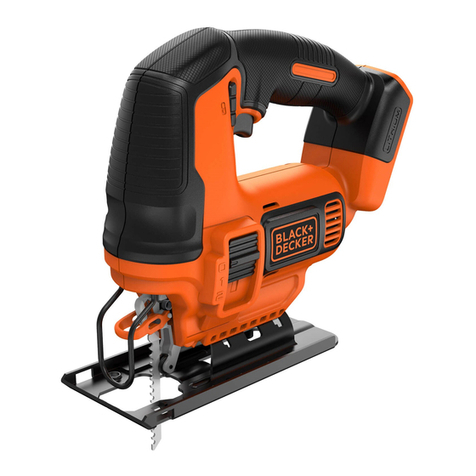
BLACK DECKER
BLACK DECKER BDCJS18 manual
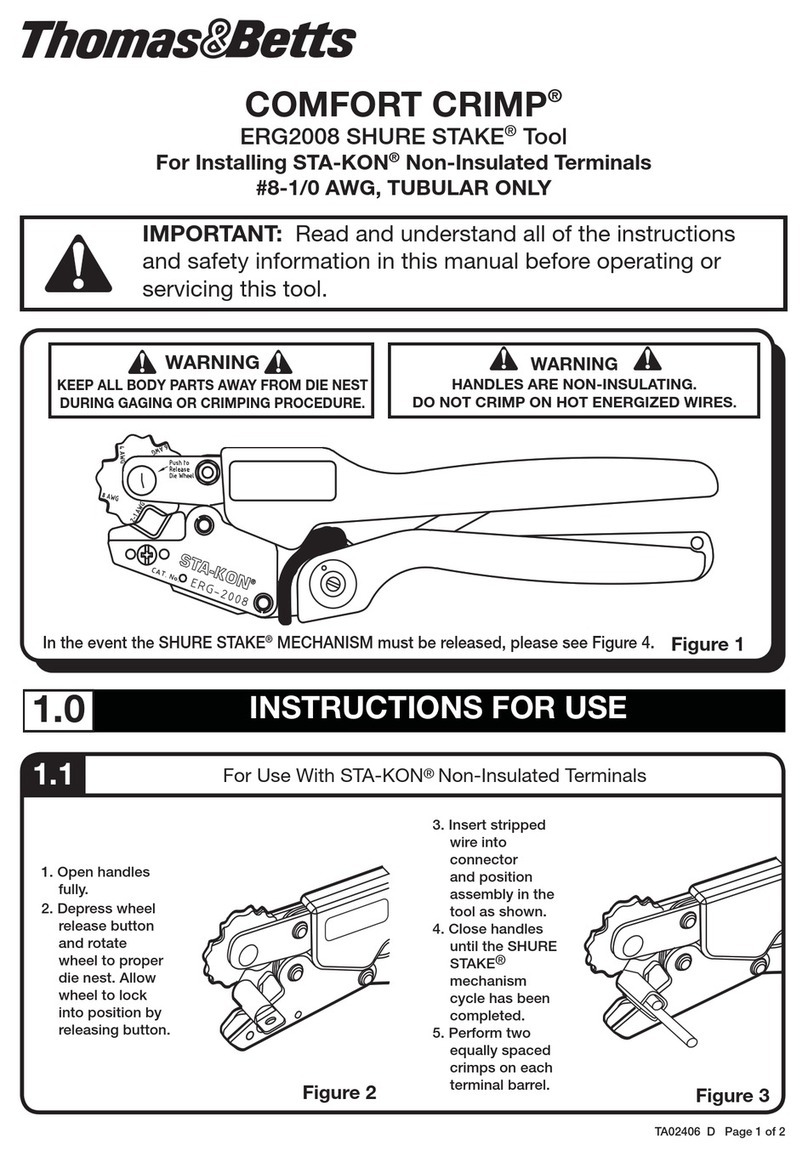
Thomas&Betts
Thomas&Betts COMFORT CRIMP SHURE STAKE ERG2008 Instructions for use

woodmizer
woodmizer LTAGA-PLCBN Safety, Operation, Maintenance & Parts Manual
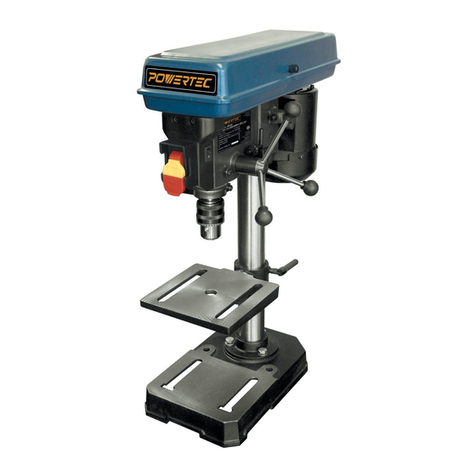
Power Tec
Power Tec DP801 owner's manual
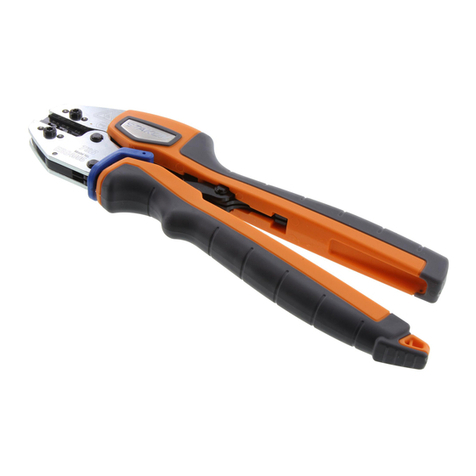
Thomas&Betts
Thomas&Betts Stakon COMFORT CRIMP ERG4005 quick start guide
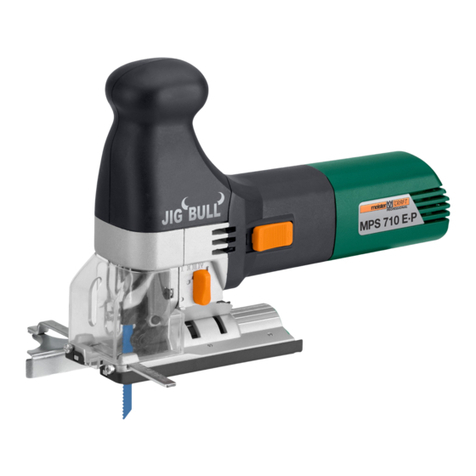
MEISTER CRAFT
MEISTER CRAFT MPS 710 E-P manual
